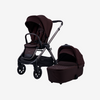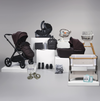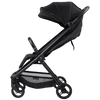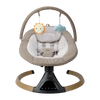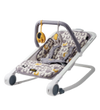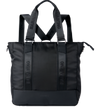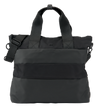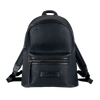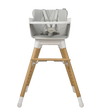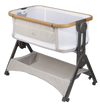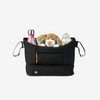Car Seat Safety
How We Test Our Bababing Car Seats
At Bababing, we don’t just design car seats – we obsess over your little one’s safety. Every Hera car seat is built on years of industry know-how, expert engineering, and real-life parenting experience.
Between our in-house product safety team and external crash testing partners, we’ve put the Hera through rigorous testing , during our manufacturing process our car seat are tested to ADAC standards – not just to tick boxes, but to give parents real peace of mind.
Crash-Tested to the Toughest Standards
All Bababing car seats meet the latest R129/03 (i-Size) regulation, the most up-to-date legal safety requirement for car seats in Europe. This includes full crash testing from frontal, side, and rear impact perspectives, using both newborn and toddler-sized crash test dummies to mirror real-life scenarios.
- Frontal impact at 50kph
- Side impact at 24kph
- Rear impact at 30kph
- Tested with both smallest and largest dummy sizes
- Misuse tests simulate incorrect installation – because we know life’s not perfect
We also test every adjustable position the Hera offers – upright, reclined, forward- and rear-facing – so it performs across all setups, every time.
What Is ADAC Testing?
ADAC tests car seats beyond the legal EU safety requirements (R129/i-Size) by evaluating:
Crash Safety
- Conducted at higher speeds (up to 64 km/h vs. the legal 50 km/h).
- Includes frontal and side impact tests using advanced crash test dummies.
- Measures forces on a child’s head, neck, and chest to determine injury risk.
Handling & Ease of Use
- How easy it is to install the seat correctly.
- How intuitive buckles, recline features, and adjustments are for parents.
Ergonomics
- Comfort and posture for babies and toddlers.
- Amount of space the child has in the seat (especially important for longer use).
Toxicity (Chemical Safety)
- Materials are tested for harmful substances like phthalates, PAHs, flame retardants, and heavy metals.
- Seats must be safe for babies’ sensitive skin and respiratory systems.
Cleaning & Build Quality
- Durability of fabrics and how easily the seat can be cleaned and maintained.
Built to Last – Because Life Happens
Before a single crash test, every Hera seat goes through durability tests designed to mimic years of daily use:
- ISOFIX tested for 2,000+ cycles
- Buckles clicked and released 5,000 times
- Harness and adjusters tested for wear and tear
- Exposure to heat, cold, UV and humidity extremes
- Water-submersion and corrosion testing
- Even the seat shell’s strength is pressure-tested
Because whether it’s school runs or road trips, we know your car seat has to hold up to real family life.
Designed Around Real Families
Forget confusing age labels. The Hera is designed for your child’s height and weight, offering a perfect fit from newborn to toddler.
Need help fitting or checking compatibility with your car? Our friendly product specialists are here to help – because we know every vehicle (and every baby) is different. Come to our store to try it out and get expert advice.
It’s Not Just a Car Seat. It’s Peace of Mind.
We know choosing a car seat can feel overwhelming – but with Bababing, you don’t need to be an expert. That’s our job. From crash test lab to family car, the Hera gives you reassurance, reliability and real-world practicality, all in one beautifully built seat.
Need help deciding if Hera is right for your baby? Our team is always ready to chat. Because your baby’s safety deserves more than guesswork.
FAQ
What car seat is right for my baby’s age or size?
In the UK, car seats are chosen based on your child’s height (i-Size/R129) or weight (older R44 standard).
For newborns, start with a rear-facing infant carrier or a 0–18kg/105cm seat. Always check your seat’s limits – and remember, height is usually more important than age!
When can my child face forward?
Legally, your child must remain rear-facing until at least 15 months if using an i-Size seat. However, experts (and safety tests) recommend keeping children rear-facing until 4 years old for better protection in a crash.
Are all car seats compatible with my car?
Not always. Some car seats require ISOFIX anchor points, while others are fitted using a seatbelt.
Check your car’s manual, or use the car seat brand’s fit checker tool to be sure – or ask the retailer for help before you buy.
What’s the difference between R129 (i-Size) and R44 car seats?
R129 (i-Size) is the newer, safer EU regulation. It uses child height, includes side-impact testing, and mandates rear-facing to 15 months. R44 uses weight-based groups (e.g. Group 0+, 1, 2) and is being phased out – we recommend choosing an R129 seat for better safety and future compliance.
How long can a baby stay in a car seat?
Newborns should not be in a car seat for more than 30–90 minutes at a time, especially on longer trips, to avoid strain on their breathing and spine.
For young babies, take breaks, stretch, and ideally move them into a flat surface like a carrycot or pram when not travelling.

